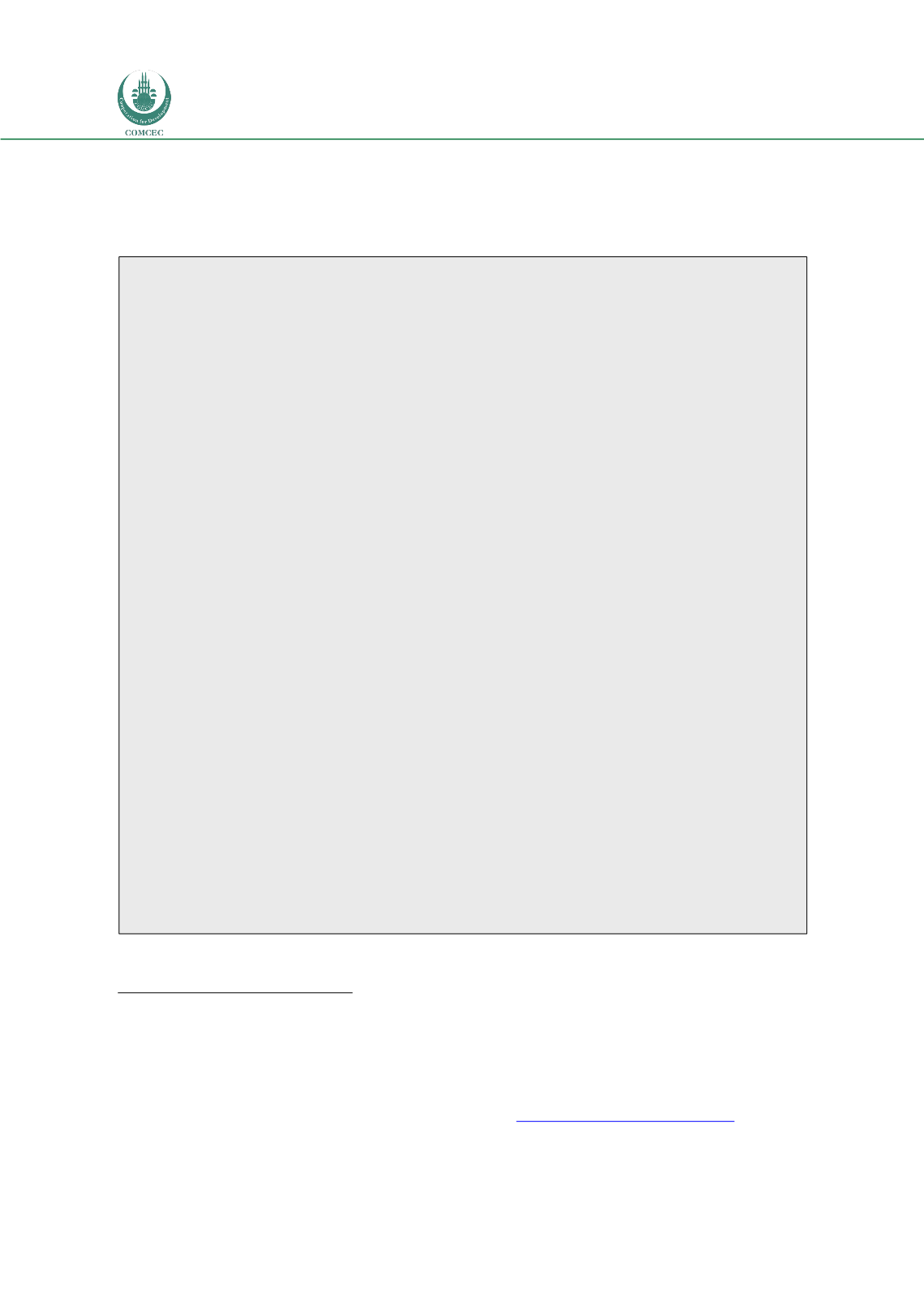

Forced Migration in the OIC Member Countries:
Policy Framework Adopted by Host Countries
60
related to irregular migration, such as smuggling and human trafficking.
257
Furthermore, the
Bali Process is largely viewed as a “talking shop” that needs more long-term staff,
infrastructure and accountability mechanisms to enact meaningful changes in the regional
migration and protection framework.
258
257
In addition to semi-regular ministerial meetings, the Bali Process has established an Ad Hoc Group to develop practical
measures to combat human trafficking, a Regional Cooperation Framework (RCF) to coordinate a regional response to
irregular movement, and the Regional Support Office to improve implementation of the RCF. The Bali Process also helped
create the Jakarta Declaration of 2013, a pledge to address irregular maritime migration in the region. While the Jakarta
Declaration was hailed by UNHCR as another step towards combatting smuggling and human trafficking, the agency also
noted that in the absence of a humanitarian protection framework such efforts can serve to further the criminal trade in the
long run, making such ventures riskier but also more profitable. Vivian Tan, “UNHCR welcomes Jakarta Declaration to
address irregular movements in Asia-Pacific,”
UNHCR
, August 21, 2013
, http://www.unhcr.org/5214acff9.html258
Kathleen Newland, “Global Governance: Fear and Desire,” in
Improving the Governance of International Migration
(Washington, DC: Migration Policy Institute, 2011), 62.
Box 2. The Indochinese Boat People Crisis and “Asylum for Resettlement”
In 1975 during the aftermath of the Vietnam War, Southeast Asia saw large outflows of “boat
people” from Vietnam, Laos, and Cambodia. In 1979, the region was faced with a growing
humanitarian crisis as countries in the region began to push Vietnamese boats back to sea, putting
the migrants at greater risk of piracy, drowning, dehydration, and other threats.
In response, the UN Secretary-General held a conference in July 1979. The participants agreed to a
formalized system, in which the countries of first asylum would accept migrants fleeing conflict and
insecurity with the condition that they be resettled to donor countries of the West. As part of the
agreement, Vietnam also pledged to crack down on departures to limit the scale of maritime flows.
Between July 1979 and July 1982, over 600,000 refugees were resettled from the region, outpacing
declining maritime arrivals in countries of first asylum.
While the program was successful at first, in 1987 maritime arrivals began to surge again, and the
consensus of 1979 began to unravel. Additionally, Western countries no longer believed that
Indochinese migrants should be deemed refugees on a prima facie
basis. To resolve these issues,
another conference was held in 1989, resulting in the Comprehensive Plan of Action (CPA). The CPA
once again encompassed a set of commitments, including two elements added on top of those from
1979: regional screening to determine the refugee status of asylum seekers (performed by UNHCR),
and the repatriation of migrants not deemed to be refugees.
The CPA concluded in 1996, and in many ways was deemed a success. The international
community’s cooperative efforts effectively remedied the Indochinese refugee crisis and shored up
confidence in the global asylum system. In the longer term though, many have criticized the regional
norm created by this “asylum for resettlement” model. Southeast Asian governments continue to see
refugees as an “international” or “UNHCR” problem, and maintain that developing countries should
not have to be responsible for providing asylum. This pervasive regional perspective has placed
forced migrants in countries such as Malaysia in precarious situations, and local integration is rarely
considered an option by government officials.
Sources:
Susan Kneebone, “Comparative regional protection frameworks for refugees: norms and norm entrepreneurs,”
The International Journal of Human Rights 20, no. 2 (2016): 153-172; Kathleen Newland, Irregular Maritime Migration in
the Bay of Bengal: The Challenges of Protection, Managemetn and Cooperation, (Bangkok: International Organization for
Migration and Migration Policy Institute, July 2015; Sriprapha Petcharamsee, “ASEAN and its approach to forced
migration issues,” The International Journal of Human Rights 20, no. 2 (2016): 173-190; W. Courtland Robinson, “The
Comprehensive Plan of Action for Indochinese Refugees, 1989-1997: Sharing the Burden and Passing the Buck” Journal of
Refugee Studies 17, no. 3 (2004): 319-333; Alice Nah, “Networks and norm entrepreneurship amongst local civil society
actors: advancing refugee protection in the Asia Pacific region,” The International Journal of Human Rights 20, no. 2
(2016): 223-240.
















